Ditapis dengan
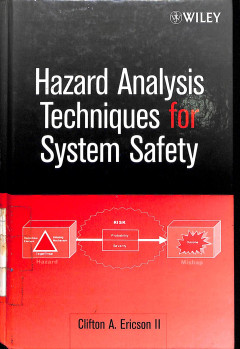
Hazard Analysis Techniques for System Safety
One of the main features of this book is that it describes hazard theory in detail. The hazard-risk-mishap connection is explained, with illustrations and examples provided. In addition, the three required components of a hazard are presented, along with the hazard triangle model. (Jml)
- Edisi
- -
- ISBN/ISSN
- 0471720194
- Deskripsi Fisik
- xx, 499 p. : Illus. ; 24 cm
- Judul Seri
- -
- No. Panggil
- 620.86 ERI h

Radiation Protection against Radon in Workplaces other than Mines | Safety Re…
This report deals with radon and thoron and their decay products in workplaces other than mines. It is intended for use in the application of radiation protection principles in those workplaces where employers may not have an extensive background in radiation protection. It provides practical information on action levels for workplaces, on monitoring techniques and on actions aimed at reducing …
- Edisi
- 33
- ISBN/ISSN
- 92–0–113903–9 / 1020–6450 ; no. 33
- Deskripsi Fisik
- 79 p;57KB
- Judul Seri
- -
- No. Panggil
- 613.62 IAE R
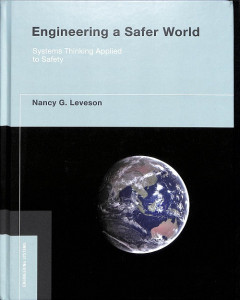
Engineering a Safer World: Systems Thinking Applied to Safety
Engineering has experienced a technological revolution, but the basic engineeringtechniques applied in safety and reliability engineering, created in a simpler, analog world, havechanged very little over the years. In this groundbreaking book, Nancy Leveson proposes a newapproach to safety--more suited to today's complex, sociotechnical, software-intensive world--basedon modern systems thinking…
- Edisi
- -
- ISBN/ISSN
- 9780262016629
- Deskripsi Fisik
- 534 p. : illus. ; 23,5 cm
- Judul Seri
- Engineering Systems
- No. Panggil
- 620.86

Safety and the Security Professional: A Guide to Occupational Safety and Heal…
The first section of this book are introduction. These sections explore such topics as the role of security in the safety program, important government agencies and resources, and the financial impact of safety programs. Without the information presented in these pages, your safety program will not be effective. The second and third sections of this book cover the specific building blocks of a …
- Edisi
- -
- ISBN/ISSN
- 0750672560
- Deskripsi Fisik
- xiv, 392 p. : Illus. ; 27 cm
- Judul Seri
- -
- No. Panggil
- 658.382 WYM s
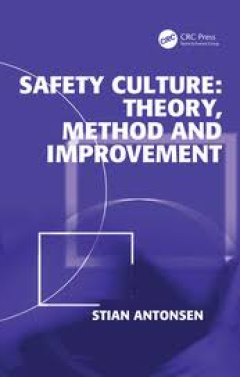
Safety Culture: Theory, Method and Improvement
This book is devoted to studying the relationship between culture and safety. This relationship, epitomized by the concept of safety culture, has undoubtedly become one of the hottest topics of both safety research and practical efforts to improve safety. For instance, most oil companies today have programmes devoted to improving the company's safety culture. Lessons learned from these accident…
- Edisi
- -
- ISBN/ISSN
- 9780754676959
- Deskripsi Fisik
- -, 172 p. : Illus. ; 24 cm
- Judul Seri
- -
- No. Panggil
- 658.382 ANT s
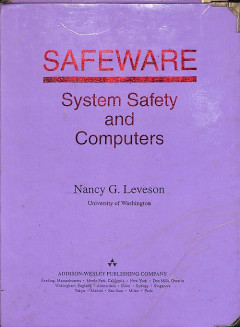
Safeware: System Safety and Computers
This book examines what is currently known about building safe electromechanical systems and looks at the accidents of the past to see what lessons can be applied to new computer-controlled systems. One obvious lessons is that most accidents are not the result of unknown scientific principles but rather of a failure to apply well-known, standard engineering practices. A second lesson is that ac…
- Edisi
- -
- ISBN/ISSN
- 0201119722
- Deskripsi Fisik
- 678 p. : illus. ; 21 cm
- Judul Seri
- -
- No. Panggil
- 629.890289 Lev s
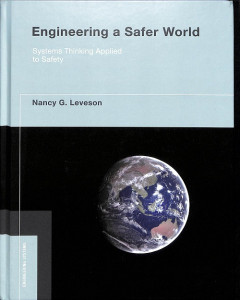
Engineering a Safer World: Systems Thinking Applied to Safety
Engineering has experienced a technological revolution, but the basic engineeringtechniques applied in safety and reliability engineering, created in a simpler, analog world, havechanged very little over the years. In this groundbreaking book, Nancy Leveson proposes a newapproach to safety--more suited to today's complex, sociotechnical, software-intensive world--basedon modern systems thinking…
- Edisi
- -
- ISBN/ISSN
- 9780262016629
- Deskripsi Fisik
- 534 p. : illus. ; 23,5 cm
- Judul Seri
- Engineering Systems
- No. Panggil
- 620.86 LEV e
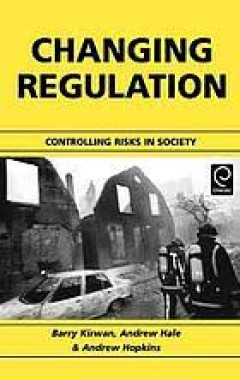
Changing Regulation: Controlling Risks in Society
Safety regulation is society's way of keeping the genie of technology in the bottle, whilst still exploiting its power for creating wealth and change. It is a difficult compromise to make. Regulators often have a thankless task. If all seems to go well they are painted as too repressive and anti-technological; if disaster strikes, the searchlight of media attention increasingly focuses on them,…
- Edisi
- -
- ISBN/ISSN
- 0080441262
- Deskripsi Fisik
- xiv, 287 p. : illus. ; 26,5 cm
- Judul Seri
- -
- No. Panggil
- 658.402 KIR c
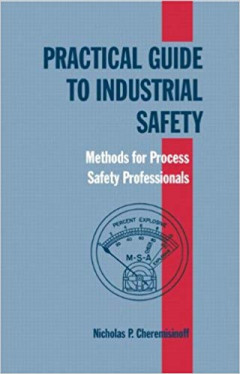
Practical Guide To Industrial Safety: Methods for Process Safety Professionals
A practical guide to industrial safety. It seeks to assist specialists in managing operations in industrial settings, including high-risk personal exposure such as inhalation hazards and direct chemical contact. It covers hazards in the chemical process industries, inhalation hazards in refineries, indoor air quality management, personal protective equipment, process safety emergency preparedne…
- Edisi
- -
- ISBN/ISSN
- 9780824704766
- Deskripsi Fisik
- vii, 459 p. : Illus. ; 24 cm
- Judul Seri
- -
- No. Panggil
- 658 CHE p
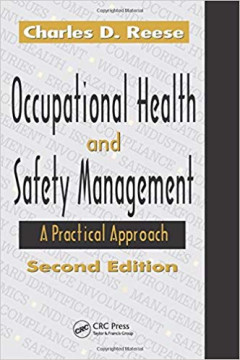
Occupational Health and Safety Management: A Practical Approach
Developed to provide safety and health students with an understanding of the how-tos of implementing an occupational safety and health initiative, the first edition of Occupational Health and Safety Management soon became a blueprint for occupational safety and health management for the smallest- to the largest-sized companies. Competently following in these oversized footsteps, the updated and…
- Edisi
- -
- ISBN/ISSN
- 1566706203
- Deskripsi Fisik
- xx, 532 p. : Illus. ; 23 cm
- Judul Seri
- -
- No. Panggil
- 658.382 REE o
 Karya Umum
Karya Umum  Filsafat
Filsafat  Agama
Agama  Ilmu-ilmu Sosial
Ilmu-ilmu Sosial  Bahasa
Bahasa  Ilmu-ilmu Murni
Ilmu-ilmu Murni  Ilmu-ilmu Terapan
Ilmu-ilmu Terapan  Kesenian, Hiburan, dan Olahraga
Kesenian, Hiburan, dan Olahraga  Kesusastraan
Kesusastraan  Geografi dan Sejarah
Geografi dan Sejarah